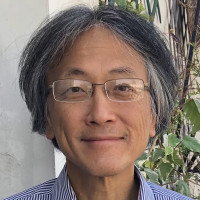Sha Xin Wei

Collective Sense-making, Prototyping Social Forms, and Anticipatory Governance
How can practices of governance – collective sense-making, prototyping social forms, and anticipatory governance – be designed that are democratic, ethico-aesthetic, robustly life-affirming, and multiscale?
This calls for considering how to construe “democratic” in present times. In this regard, one starting point is that the living beings most affected by a policy should have a place and a say in the decision process proportionate to how they would be impacted. Although this is an uncontroversial maxim, even a platitude, in practice, utilitarian and efficiency rationales make this all too rare. Rather than critiquing whole formal institutions like the courts or parliaments, I will focus on the dynamics, tools and techniques of governance at quotidian social scales.
Of course this unfurls into considering how to construe “living being,” “saying,” “decision,” and “process.” Regarding ethico-aesthetic as entailing value as well as fact draws impetus from both Hume’s negative argument, as well as Guattari’s speculative call for ethico-aesthetic experiment, allowing for nuance, multiplicity, and the tacit. Robustly life-affirming entails being able to function under the conditions of irreducible contingency, incomplete knowledge, unintended consequences, inextricably entangled complexity where no factor is safely exogenous, and open-ended historicity for which no a priori set of possible states or evolutionary principle can be modeled in advance.
Making sense in common (to borrow Stengers’ formulation) and deciding what is to be done neither under a model of command and control nor of algorithmic mechanism invites tactics for navigating oceanic contingencies whose power outstrips every finite, mortal epistemic capacity, technology and technique.
About Sha Xin Wei
Sha Xin Wei PhD, Professor at the School of Arts, Media + Engineering and the School of Complex Adaptive Systems, directs the Synthesis Atelier for transversal art, philosophy and technology at Arizona State University. He has been a professor at Concordia University as director of the Topological Media Lab, the European Graduate School, the New Centre for Research & Practice, and Senior Fellow at Building21 at McGill University.
Sha's core research concerns processualist approaches to ontogenesis and poiesis. His art and scholarly work range from gestural media, movement arts, and realtime media installation through experiential design to critical studies and philosophy of technology. Sha has published in philosophy, media arts and sciences, experimental music and performance, science and technology studies, computer science, and human computer interaction, including the book Poiesis and Enchantment in Topological Matter (MIT). He is an associate editor for AI & Society, and serves on the Governing Board of Leonardo International Society for the Arts, Sciences and Technology.
Sha’s art includes the TGarden playspaces, Hubbub speech-sensitive urban spaces, Membrane calligraphic video, Softwear gestural sound instruments, the WYSIWYG gesture-sensitive sounding weaving, Ouija performance-installations, and kinetic / light sculpture responding to movement and gesture, such as Cosmicomics Elektra, eSea Shanghai, the IL Y A video membrane Stanford/Berkeley, and Time Lenses Beall Center, and Palimpsest Paris. In collaboration with Khintirian, Ingalls, and Laurin, he created the Serra vegetal life environment.